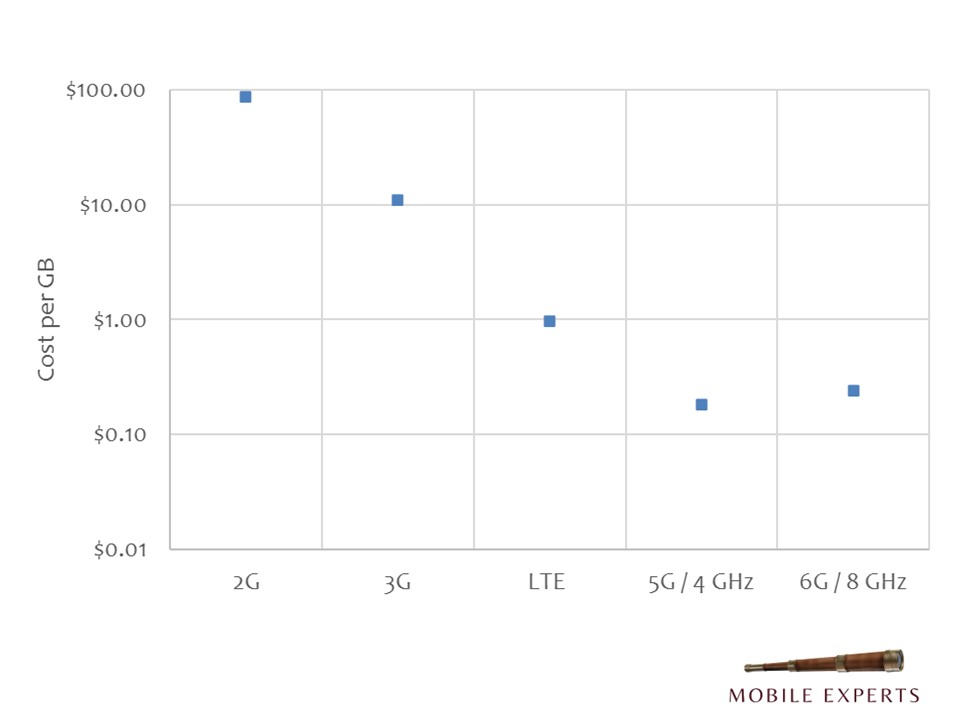The mobile industry is a strange place. First, we give our technology a name. Then a bunch of engineers develop ideas for about ten years. Finally, we hand the new technology over to the business people and they decide whether to invest in it. It’s completely backward.
We’re well into the 5G cycle…but many operators still have not invested in the 5G core network. They have used 5G to augment capacity in the network, but not to open up new revenue. Very few operators are offering network slices and other features, even five years after the introduction of 5G.
We’re already talking about 6G as if it’s a real thing. Before we invest billions of dollars as an industry to develop it (whatever it is), let’s talk about what it can do at a business level.
Every generation over the past 30 years has brought a reduction in cost for mobile operators. We have increased spectral efficiency. We have moved into wideband radio channels. Like Moore’s Law, every generation has reduced cost dramatically. But the story is grinding to a halt. Further improvements in spectral efficiency won’t come from changes to the radio waveform. Any new spectrum below 14 GHz is unlikely to help either, as wide bandwidths are unavailable without very restrictive spectrum sharing rules.

So, let’s return to our question here: If 6G isn’t going to enable more mobile data for less money, what is its purpose?
I propose that 6G should be much more focused on enterprise applications. Forget about the smartphone market….operators are not willing to invest more in capacity at a higher cost per GB, to receive the same revenue that they’ve had for the past 15 years. Instead, the main thrust of 6G development should be on improvements to reliability, quality, automation, and latency. In fact, I would argue that most of the effort should go into highly targeted adaptation of 5G/6G networks for specific enterprise use cases. My partners have detailed some very specific opportunities that will grow steadily over the next 30 years.
Let the customers tell us what they want. I have not heard a single enterprise tell me that they want “integrated sensing and communications”. That is an engineer’s pipe dream. But enterprises are asking for guaranteed SLAs, and network slices, and investment in local edge computing and AI resources. This is less sexy than the sweeping changes of previous “G” cycles. But that’s what is needed for 6G to make money.
As an industry, we need to learn how to be market-led, and develop what the customers want. Our free ride is over.

